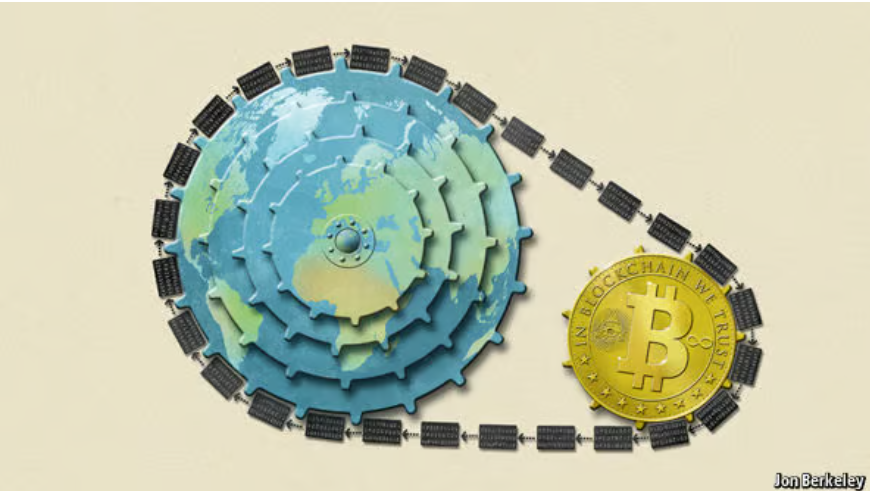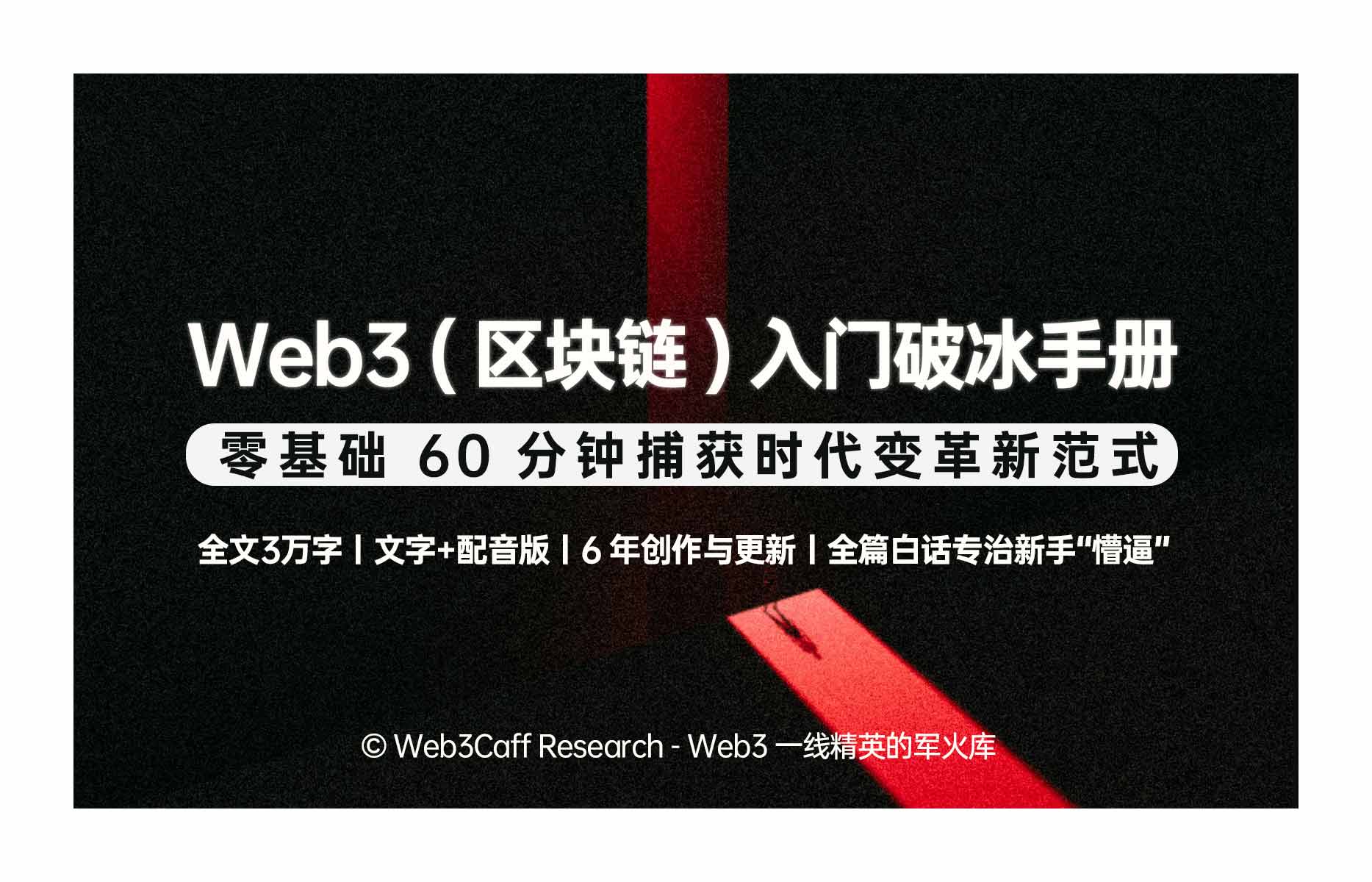Gary Gensler 曾说过目前是加密世界的 “狂野西部”,但是没必要因为西部众多的不法之徒,而忽视了 “西进运动” 给那个时代带来的拓荒精神,和牛仔们刚踏上这片热土的自主、冒险和创新。恰如比特币,正在给这个社会,这个世界带来种种变革。
原文:The trust machine(Economist)
编译:Will 阿望
封面:Photo by Shubham Dhage on Unsplash
Gary Gensler 曾说过目前是加密世界的 “狂野西部”,但是我们没必要因为西部众多的不法之徒,而忽视了 “西进运动” 给那个时代带来的拓荒精神,和牛仔们刚踏上这片热土的自主、冒险和创新。恰如 2008 年出现的比特币,正在给这个社会,这个世界带来种种变革。
以下编译一篇来自 The Economist 2015 年关于比特币的文章——The Trust Machine,以此来对照两个 7 年时间跨度,比特币/区块链行业的状况。这会让我们认识到,尽管如今处于加密寒冬,但是当初的信仰,自由与热爱依旧。
以下,enjoy:

比特币背后的技术将会改变经济运行方式。
The technology behind bitcoin could transform how the economy works.
Oct 31st 2015
BITCOIN has a bad reputation. The decentralised digital cryptocurrency, powered by a vast computer network, is notorious for the wild fluctuations in its value, the zeal of its supporters and its degenerate uses, such as extortion, buying drugs and hiring hitmen in the online bazaars of the “dark net”.
比特币对外界来说一直臭名昭著,这种去中心化的数字加密货币,由大型计算机的算力网络驱动,以其价值的剧烈波动、信仰者的狂热,以及其堕落的非法用途而闻名,例如在 “暗网” 在线市场上购买毒品、雇佣杀手等。
This is unfair. The value of a bitcoin has been pretty stable, at around $250, for most of this year. Among regulators and financial institutions, scepticism has given way to enthusiasm (the European Union recently recognised it as a currency). But most unfair of all is that bitcoin’s shady image causes people to overlook the extraordinary potential of the “blockchain”, the technology that underpins it. This innovation carries a significance stretching far beyond cryptocurrency. The blockchain lets people who have no particular confidence in each other collaborate without having to go through a neutral central authority. Simply put, it is a machine for creating trust.
这是不公平的。比特币的价值在 2015 年的大部分时间内一直保持在 250 美元左右,相当稳定。对于监管系统和金融机构,曾经的怀疑已经被逐步认可所取代(欧盟已经承认它为货币)。但最不公平的是,比特币的阴暗形象导致人们忽视了 “区块链” 的非凡潜力,而这项技术正是比特币的基础。这项创新的意义远远超出了加密货币本身。区块链可以让没有信任基础的人们,在不必经过中立的中央信任背书的情况下进行合作。简而言之,它是一种创造信任的机器。
区块链的由来
The Blockchain Food Chain
To understand the power of blockchain systems, and the things they can do, it is important to distinguish between three things that are commonly muddled up, namely the bitcoin currency, the specific blockchain that underpins it and the idea of blockchains in general. A helpful analogy is with Napster, the pioneering but illegal “peer-to-peer” file-sharing service that went on line in 1999, providing free access to millions of music tracks. Napster itself was swiftly shut down, but it inspired a host of other peer-to-peer services. Many of these were also used for pirating music and films. Yet despite its dubious origins, peer-to-peer technology found legitimate uses, powering internet startups such as Skype (for telephony) and Spotify (for music streaming)—and also, as it happens, bitcoin.
为了理解区块链的功能,以及理解区块链能够实现的能力,有必要区分三个时常混淆的概念,即比特币货币本身、支撑比特币网络的区块链技术,以及区块链的总体概念。一个有用的类比是 1999 年上线的 Napster,这是一个开创性但又不合法的 “点对点” 文件共享服务网络,为数百万音乐曲目提供免费访问。Napster 本身很快被关闭,但它启发了许多其他的点对点服务网络,许多同样被用于盗版音乐和电影。
尽管上述点对点服务网络的初衷有待商榷,但是该技术后来确实找到了合法用途,为互联网初创企业(如用于电话的 Skype 和用于音乐流媒体的 Spotify)提供动力与方向,同样也适用于比特币。
The blockchain is an even more potent technology. In essence it is a shared, trusted, public ledger that everyone can inspect, but which no single user controls. The participants in a blockchain system collectively keep the ledger up to date: it can be amended only according to strict rules and by general agreement. Bitcoin’s blockchain ledger prevents double-spending and keeps track of transactions continuously. It is what makes possible a currency without a central bank.
区块链是一种强大的技术,本质上,它是一个共享的、受信任的、公共的账本,任何人都可以检查账本,但没有任何单个用户可以控制它。区块链系统的参与者共同维护账本的更新:它只能根据严格的规则进行修改。比特币的区块链网络可以防止交易的双重支付,并对账本持续保持跟踪。这就是实现一个没有中央银行控制的货币的关键所在。
Blockchains are also the latest example of the unexpected fruits of cryptography. Mathematical scrambling is used to boil down an original piece of information into a code, known as a hash. Any attempt to tamper with any part of the blockchain is apparent immediately—because the new hash will not match the old ones. In this way a science that keeps information secret (vital for encrypting messages and online shopping and banking) is, paradoxically, also a tool for open dealing.
区块链也是密码学领域意想不到成果的最新范例,数学混淆用于将原始信息压缩成一个称为哈希的代码。任何试图篡改区块链的尝试都会立即显露出来,因为新的哈希不会与旧的哈希相匹配。自相矛盾的是,一个使信息保密的科学(加密消息和在线购物和银行业务的重要组成部分)同样也是一个公开交易的工具。
Bitcoin itself may never be more than a curiosity. However blockchains have a host of other uses because they meet the need for a trustworthy record, something vital for transactions of every sort. Dozens of startups now hope to capitalise on the blockchain technology, either by doing clever things with the bitcoin blockchain or by creating new blockchains of their own (see article).
比特币本身可能仅仅基于人们的好奇。然而,区块链有许多其他用途,因为它满足了对可信记录的需求,这对于各种交易至关重要。现在有数十家创业公司希望利用区块链技术,要么通过在比特币区块链上做创新,要么创建自己的新区块链。
One idea, for example, is to make cheap, tamper-proof public databases—land registries, say, (Honduras and Greece are interested); or registers of the ownership of luxury goods or works of art. Documents can be notarised by embedding information about them into a public blockchain—and you will no longer need a notary to vouch for them. Financial-services firms are contemplating using blockchains as a record of who owns what instead of having a series of internal ledgers. A trusted private ledger removes the need for reconciling each transaction with a counterparty, it is fast and it minimises errors. Santander reckons that it could save banks up to $20 billion a year by 2022. Twenty-five banks have just joined a blockchain startup, called R3 CEV, to develop common standards, and NASDAQ is about to start using the technology to record trading in securities of private companies.
例如,一个想法是制作低成本、防篡改的公共数据库,比如土地登记(洪都拉斯和希腊感兴趣),或对奢侈品、艺术品的所有权进行登记。上述的想法可以通过将有关标的的信息嵌入公共区块链来作为公证的文件,这样就不再需要公证人为它们提供见证。金融服务公司正在考虑使用区块链作为谁拥有什么的记录,而不是拥有一系列内部分类账簿。
可信的私有分布式正本消除了与交易对手的每笔交易进行对账的必要性,它高效并且无误。Santander 银行认为,到 2022 年,它可以为银行节省高达 200 亿美元的成本。25 家银行刚刚加入了一个名为 R3 CEV 的区块链初创公司,以制定共同标准,纳斯达克即将开始使用这项技术记录私人公司证券的交易。
These new blockchains need not work in exactly the way that bitcoin’s does. Many of them could tweak its model by, for example, finding alternatives to its energy-intensive “mining” process, which pays participants newly minted bitcoins in return for providing the computing power needed to maintain the ledger. A group of vetted participants within an industry might instead agree to join a private blockchain, say, that needs less security. Blockchains can also implement business rules, such as transactions that take place only if two or more parties endorse them, or if another transaction has been completed first. As with Napster and peer-to-peer technology, a clever idea is being modified and improved. In the process, it is fast throwing off its reputation for shadiness.
这些新的区块链不需要基于比特币一样的机制进行工作,它们中的许多可以通过寻找替代其消耗巨大算力能耗的 “挖矿” 过程来调整其模型,以及替代比特币网络以铸造新的比特币作为对参与者提供维护账本所需的报酬。
行业内一组经过许可的参与者也可以相互商定加入一个私有区块链。新的区块链还制定实施业务规则,例如仅当两个或更多方认可它们时,交易才会发生。与 Napster 和点对点技术一样,基于此的创新正在/已经诞生。在此过程中,区块链正在快速摆脱其不良信誉的影响。

区块链的创新
New Chains on the Block
The spread of blockchains is bad for anyone in the “trust business”—the centralised institutions and bureaucracies, such as banks, clearing houses and government authorities that are deemed sufficiently trustworthy to handle transactions. Even as some banks and governments explore the use of this new technology, others will surely fight it. But given the decline in trust in governments and banks in recent years, a way to create more scrutiny and transparency could be no bad thing.
区块链的普及对于任何 “信任中介业务” 来说都是不利的——那些被认为足够可靠以处理交易的集中机构和官僚机构,如银行、清算机构和政府当局。尽管一些银行和政府正在探索使用这项新技术,但其他人肯定会反对它。但考虑到近年来对政府和银行信任的下降,创造更多的监督和透明度可能并不是坏事。
Drawing up regulations for blockchains at this early stage would be a mistake: the history of peer-to-peer technology suggests that it is likely to be several years before the technology’s full potential becomes clear. In the meantime regulators should stay their hands, or find ways to accommodate new approaches within existing frameworks, rather than risk stifling a fast-evolving idea with overly prescriptive rules.
在这个早期阶段制定针对区块链的规则将是一个错误:点对点技术的历史表明,在技术的潜力被完全释放之前,可能还需要更多时间。在此期间,监管机构应该保持克制,或找到在现有框架内能够适应创新的方式,而不是通过过度监管而扼杀一个创新的涌现。
The notion of shared public ledgers may not sound revolutionary or sexy. Neither did double-entry book-keeping or joint-stock companies. Yet, like them, the blockchain is an apparently mundane process that has the potential to transform how people and businesses co-operate. Bitcoin fanatics are enthralled by the libertarian ideal of a pure, digital currency beyond the reach of any central bank. The real innovation is not the digital coins themselves, but the trust machine that mints them—and which promises much more besides.
分布式账本的概念可能听起来不具有革命性或吸引力,但是双重会计记账法和股份制公司也同样如此。然而,与这些伟大的创新相同的是,区块链这个看似平凡的技术或改进过程,有潜力改变人们和企业的合作方式。比特币信仰者们着迷于这种自由主义理想——一种超越任何央行的纯粹数字货币。但真正的创新不是数字货币本身,而是创造它们的信任机器,以及它能够带来的更多变革。
免责声明:作为区块链信息平台,本站所发布文章仅代表作者及嘉宾个人观点,与 Web3Caff 立场无关。文章内的信息仅供参考,均不构成任何投资建议及要约,并请您遵守所在国家或地区的相关法律法规。



















